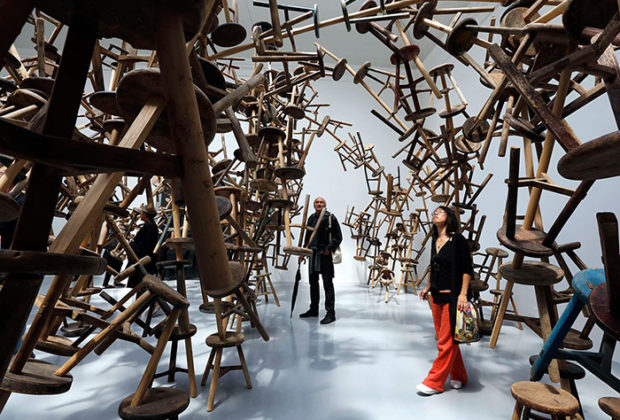
Contemporary art biennials – visual art institutions
As time goes by, the international artistic movement defines itself more and more. Specific events, movements and activities become wider and develop in a diversity of formulas. This progress is obvious when it comes to contemporary art, because it receives more and more expression forms, innovatory and unconventional, beyond the traditional ones, known in the art history. In fact, these new means of artistic expression, reinterpretations, abstract gestures, symbols and metaphors, ironies, ready-made objects, performance, mixing it with the art of show or using new media and technologies, all form the specificity of contemporary art, whose message reflects the realities of today’s world. Artists react, through their creations, to a globalized environment, characterized by cultural diversity and very advanced science, with many facades. Expressing themselves through a wide spectrum of creative means, sources and styles to create art forms, contemporary artists debate over the changing society nowadays, to raise curiosity and questions and often instigate controversies and rebellion forms.
Changes are noticeable mostly in the last two decades of the 20th century and in the beginning of the 21st century, when the number of important international contemporary art exhibition has known an amazing growth. Even if we limit ourselves here to a short analysis of the cyclic ones – biennials, triennials – it is obvious that the phenomenon has determined the enlargement of the viewers’ horizon and has influenced the creation process and the art showing activity. This draws, at the same time, a growth of the number of art experts and of the specialized marketing, making art critics to look at the expansion of these events as one of the main characters of the contemporary art system, if not the most important one.
The large scale exhibitions are, for certain, the stage where the artworks, the artist, the curator, the expert, the critic and the public meet. The exhibitions and the market bring forth the most meaningful effects regarding artists’ promotion, cultural policy and, of course, value (both economic and aesthetic) of art itself. Not coincidentally, by respecting the variables regarding the assessments, the success of a temporary exhibition is measured, on one hand, based on the comments of opinion leaders (critics, curators, gallery owners, artists, historians), who deliver opinions and points of view sustained by their expertise and their direct relationships with the artists, and, on the other hand, on the public’s approval and the number of visitors who come to those exhibitions.
The role of great contemporary art exhibitions
An exhibition is the most dynamic and most efficient place where art reaches us all. It is not just a parallel alien structure, but an embedded part in the whole artistic process. A contemporary art exhibition is not just an exposure of art pieces, but also an attempt to systematize ideas or art movements, to assert aesthetic values, to educate the public and to represent symbols. The exhibitions, these synthetic events have always been a fertile ground for observing history and art criticism, just by their experimental, temporary and ephemeral nature.
Furthermore, it is important to emphasize the importance of some exhibitions as catalysts for a series of progresses that led to the art market development; the increasing number of specialized publishing houses, the growth of the catalogue production, which gives durability to temporary events; printing many specialized works and studies, sizeable monographies regarding group or individual exhibitions that become a real standard of contemporary artists who’ll make history; creating promotion campaigns offering immediate visibility and economic trade to artists; the way we anchor ourselves to visual art, which is no longer fragmentary, but anthological, when it comes to personal exhibitions, and not just isolated, sustaining the idea of center and periphery, but open, universal – in the collective exhibitions.
——————————————————————————————————————————–
Continue reading in The Art of Living no. 16, an issue dedicated to contemporary art. DOWNLOAD









